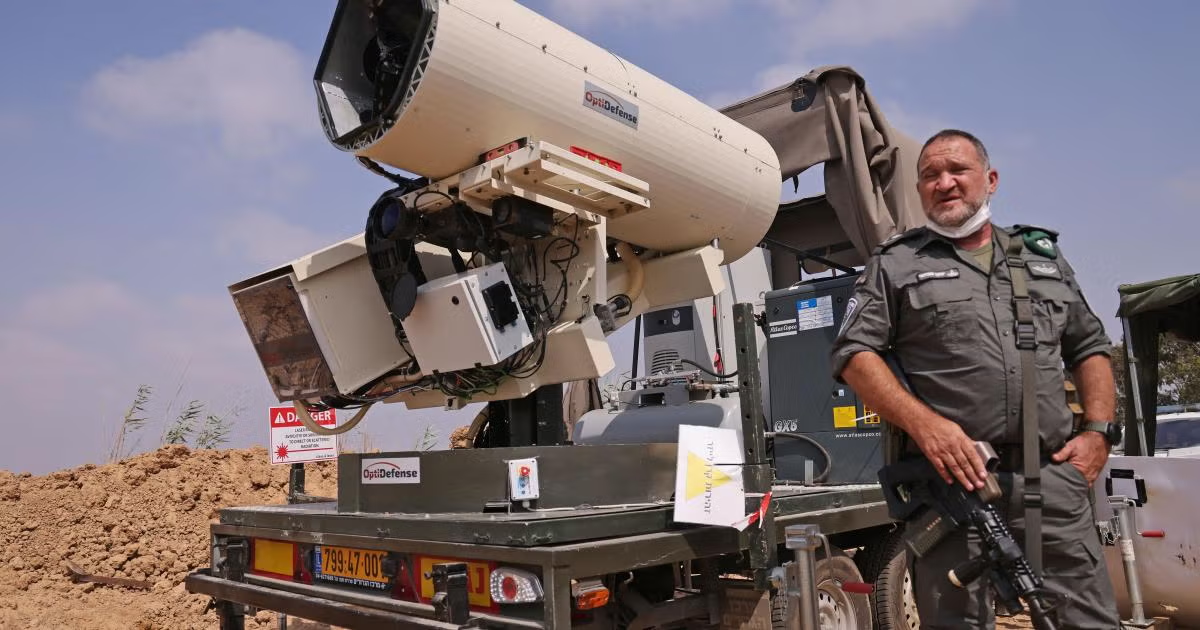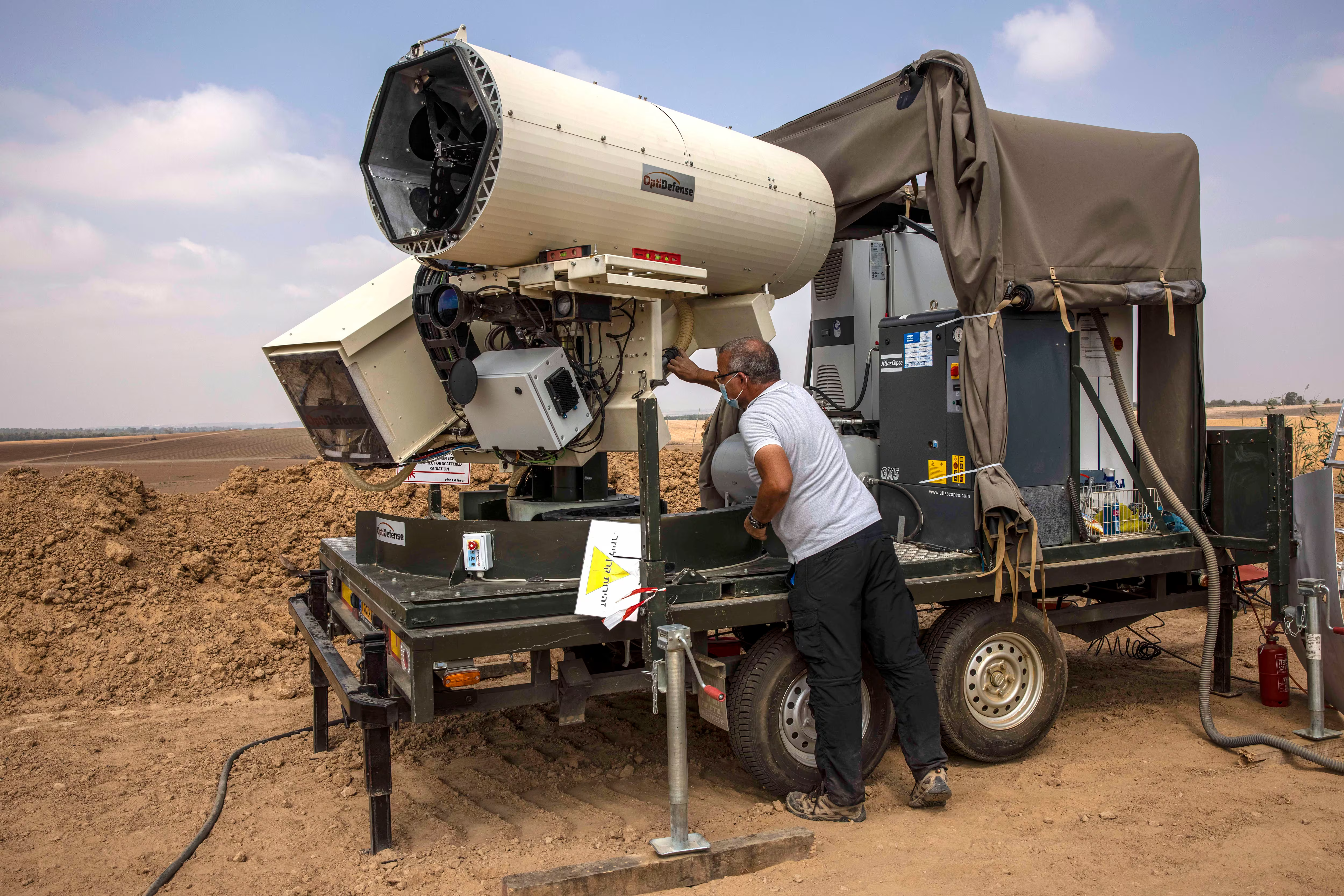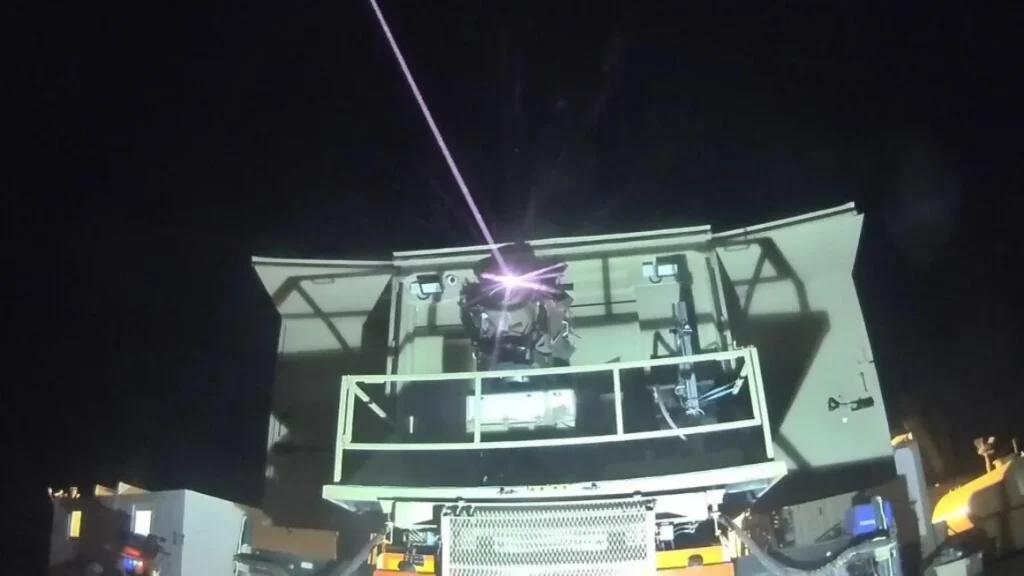Israel’s “Iron Beam” Lasers Defense System Set to Redefine Warfare.
In a bold advancement of defense technology, Israel is preparing to operationalize its innovative “Iron Beam” lasers defense system within a year. The new system is designed to intercept and neutralize a range of aerial threats—drones, missiles, rockets, and mortars—using high-powered lasers. The Iron Beam represents a significant technological and financial leap forward, promising to drastically cut the cost per interception while providing an additional layer of protection alongside the Iron Dome, Israel’s well-known missile defense system.
After investing over $500 million in agreements with Israeli defense contractors Rafael Advanced Defense Systems and Elbit Systems, Israel aims to have the Iron Beam’s initial capabilities up and running by next year. As regional hostilities continue, the Iron Beam’s deployment is seen as part of Israel’s broader strategy to counter an evolving threat landscape, which now includes more frequent drone and rocket attacks from Iran-backed factions and other groups in the Middle East.
The Iron Beam was first unveiled as a prototype in 2021, and since then, Israel has been actively working to bring it to operational status. Eyal Zamir, director general of Israel’s defense ministry, heralded the new technology, calling it “the beginning of a new era in warfare.” According to the defense ministry, the lasers system is expected to cover short- to medium-range threats, complementing the Iron Dome, which has been highly effective at intercepting larger, slower-moving projectiles like missiles and rockets.

However, experts note that while the Iron Dome is effective against rockets, it struggles with smaller and faster-moving drones, which are difficult to track using traditional radar due to their low radar signatures and agile flight paths. This makes the Iron Beam a welcome addition to Israel’s defense arsenal, as it uses directed lasers energy to overheat and disable drones, missiles, and rockets before they reach their targets.
The Iron Beam uses a high-power ground-based lasers that focuses energy on a projectile’s vulnerable points, such as its engine or warhead. The intense heat causes these components to fail, effectively disarming the projectile before it can cause damage. With a range of several kilometers, the system has the capacity to neutralize multiple threats from considerable distances.
This method of interception contrasts sharply with Israel’s traditional systems, which rely on launching costly interceptor missiles. Unlike missile-based interception, laser-based defense enables quick engagements with minimal preparation, and it does not require extensive logistical support. Experts say that in most cases, the Iron Beam can heat and destroy a projectile within seconds of locking onto it, making it both faster and cheaper.
The Iron Beam’s cost efficiency is a critical advantage. Each missile fired by the Iron Dome system costs around $50,000, and in many cases, the Iron Dome system fires two missiles per interception to ensure the target is neutralized. In stark contrast, each laser-based interception with the Iron Beam is projected to cost about $2. This drastically lowers the financial burden of defense, especially in times of escalated conflict when intercepting numerous projectiles per day is essential.
Sascha Bruchmann, a visiting research fellow for defense and military analysis at the London-based International Institute for Strategic Studies, commented, “You won’t ruin the defense budget,” adding that the Iron Beam is cost-effective enough to enable continuous, high-volume interceptions without significantly impacting Israel’s defense expenditures.

Since the Iron Dome system was deployed, it has been widely lauded for its success in intercepting rockets and missiles. However, the Iron Dome’s limitations became evident when faced with smaller, lighter, and more maneuverable drones, which have become increasingly prevalent in recent conflicts with Hezbollah and other Iran-backed groups in Lebanon and Gaza.
The addition of the Iron Beam could offer a critical solution for this challenge. Drones have become a particularly effective tool in asymmetric warfare because they are difficult to detect and intercept, making them a persistent threat in Israel’s northern and southern regions. Yehoshua Kalisky, a senior researcher at the Institute for National Security Studies in Tel Aviv, noted that the laser’s ability to “heat and destroy” smaller drones and UAVs could be pivotal in countering these types of attacks.
Israel is not alone in exploring laser defense technology. The United States Navy has tested high-energy lasers capable of destroying aircraft mid-flight, and the United Kingdom recently introduced the DragonFire, a lasers-based weapon designed to counter aerial threats. China and Russia are also reportedly advancing their lasers capabilities, with the Pentagon speculating that both nations are developing lasers capable of targeting satellites.
In the Middle East, Iran has expressed interest in lasers technology for defense. Iranian state media reported in 2022 that the country is “capable of manufacturing laser weapons to defend sensitive regions.” However, analysts believe Iran’s technology, suspected to be based on the Chinese-made “Silent Hunter” laser system, may not be as advanced or high-powered as the Iron Beam.
Despite its promise, the Iron Beam system is not without its limitations. Cloudy, rainy, or hazy weather can inhibit lasers effectiveness, as moisture and other particles in the air can scatter the laser beams, reducing their range and accuracy. Additionally, the Iron Beam requires a significant amount of power to operate, which could limit its deployment in field conditions where power sources are less accessible.
The timeline for making the Iron Beam fully operational remains uncertain, as even the best defense projects often require extensive testing. Bruchmann pointed out that achieving reliable laser interception technology has been a “decades-long quest,” and only time will reveal whether Israel’s Iron Beam will meet these high expectations.
The Iron Beam is expected to alter the calculus of Israel’s adversaries. Experts speculate that this advanced laser defense system could deter further attacks by Iran and its proxies. In a recent report, The New York Times indicated that Hamas was eager to expedite attacks before Israel could deploy the Iron Beam, citing fears that the system would be highly effective against its projectiles.

Some experts suggest that the Iron Beam could also reduce the impact of the missile arsenals amassed by Hezbollah and other Iranian allies. If the Iron Beam proves effective in real-world combat, it could neutralize much of the “strategic arsenal” of rockets and missiles that Iran and its proxies rely on to threaten Israel.
Israel’s Iron Beam laser defense system is an ambitious step toward a new era in warfare, blending cutting-edge technology with cost-effective operations. While challenges remain in terms of environmental conditions and high power demands, the system’s potential to offer low-cost, high-frequency interception against a variety of threats marks a substantial evolution in defense capabilities.
The successful implementation of the Iron Beam could provide Israel with a powerful new tool in its layered defense strategy. As Israel prepares for the Iron Beam’s operational launch, the world will closely observe how this technology performs under pressure. Whether or not the Iron Beam becomes a game-changer, it is poised to be an influential addition to modern warfare, representing the next step in the evolution of aerial defense systems.




